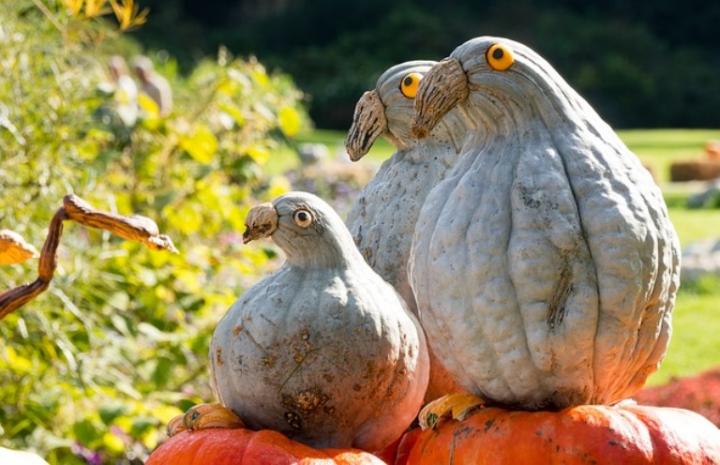






Nothing speaks of fall and winter like the appearance of winter squashes and pumpkins in stores, farmers’ markets, and on our tables.
It’s time to turn to the sweet, orange-fleshed hubbards, buttercups, butternuts, and acorns for comfort. Botanists also classify pumpkins among the winter squashes.
Native to the New World, all varieties of squash and pumpkins belong to the genus Cucurbita within the large plant family Cucurbitacae.
“Summer” squashes are varieties of squash bred to be eaten as tender, immature fruits, as distinguished from “winter” squash, whose orange- or yellow-fleshed fruits are allowed to mature fully.
Many of the hard-rinded hubbards, butternuts, buttercup, and kabocha types will keep six months or more if free from injury, properly cured and stored in a cool (50° to 55°), dry space.
Every kind of winter squash of is versatile: try it baked, steamed, pureed into a creamy soup, or added in chunks to a stew, casserole, or winter salad. Bake it into pies and muffins, even add pureed squash to smoothies.
And don’t throw out the skins and seeds*. All parts of winter squash and pumpkins are edible , except for the stem.
And they’re really good for you!
Winter squash is a nutritional powerhouse, a superior source of Vitamin A, and a good source of fiber, vitamin C, several of the B complex vitamins, potassium, and many other essential minerals.
In addition, they contain unusually high amounts of several carotenoids, a class of more than 600 plant pigments manufactured by plants for their own protection that give many fruits and vegetables their orange or yellow tinge. Some carotenoids convert to Vitamin A in the body; others may play a role in cancer prevention, blood-sugar control, and immune function.
Although most of their calories come from carbohydrates, winter squash contain a special class of carbohydrates that have antiinflammatory and antioxidant, as well as cholesterol- and insulin-regulating properties.
Our favorite way of eating the buttercup-type squashes we grow:
Wash, halve, remove seeds, and cut the squash into wedges.
Brush oil or butter onto the skin side, add a bit of maple syrup and half-an-inch of water to the baking dish, cover, and bake at 350° until a knife pierces the skin easily.
Then eat, skin and all.
When buying winter squash, choose one that’s heavy for its size, has a hard rind, and is free from soft spots. Don’t worry about warts and brown ridges.
*A note about the seeds
For centuries squash and pumpkins seeds have been valued not only for their protein content and healthy blend of oils, but also for their medicinal value. You save and dry the seeds, and I’ll save that information for another post.
~ By Margaret BoylesMargaret Boyles lives in a wood-heated house in central New Hampshire. She grows vegetables, keeps chickens, swims in a backyard pond in summer, snowshoes in the surrounding woods in winter, and commutes by bike whenever possible.
Copyright © www.100flowers.win Botanic Garden All Rights Reserved